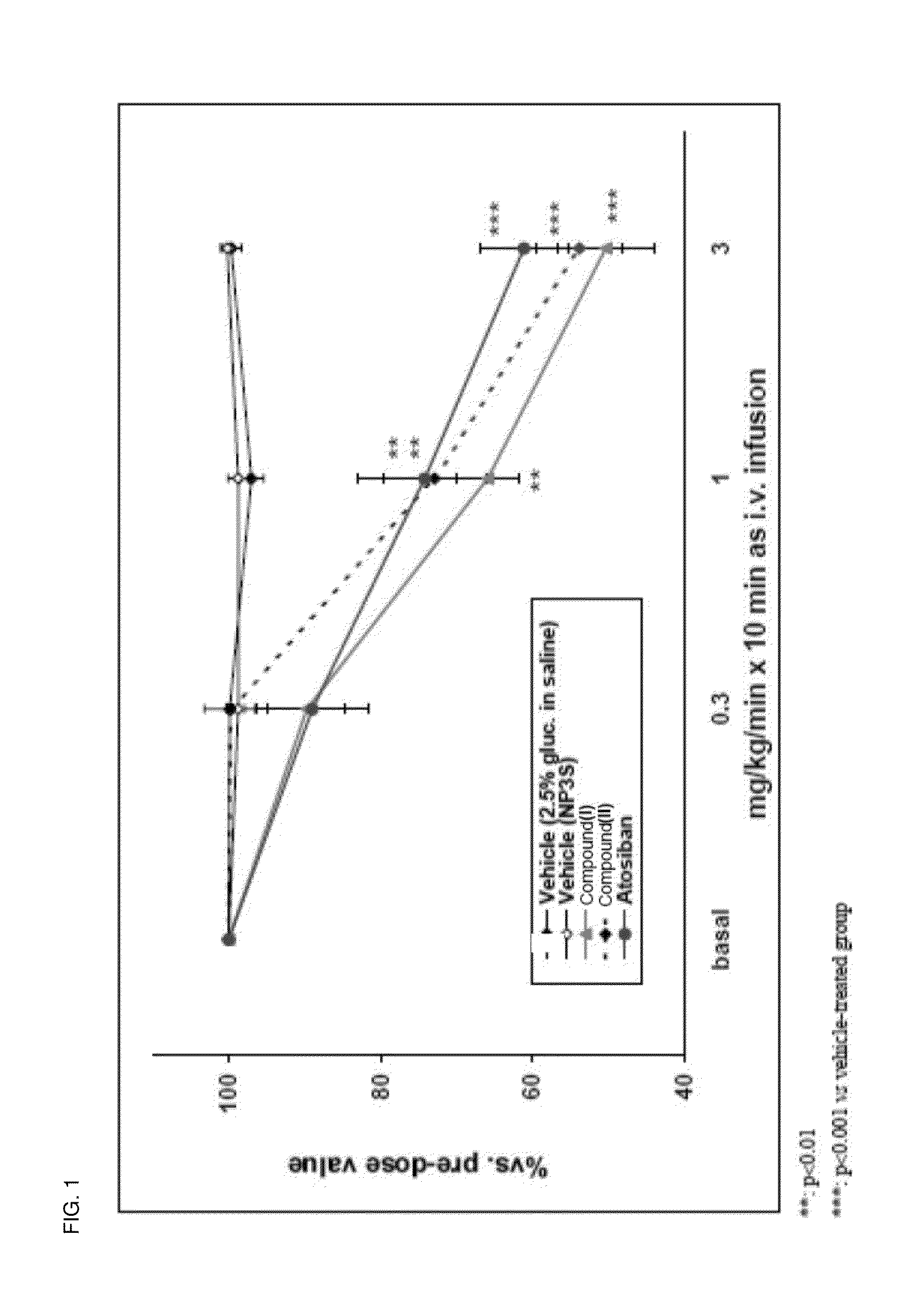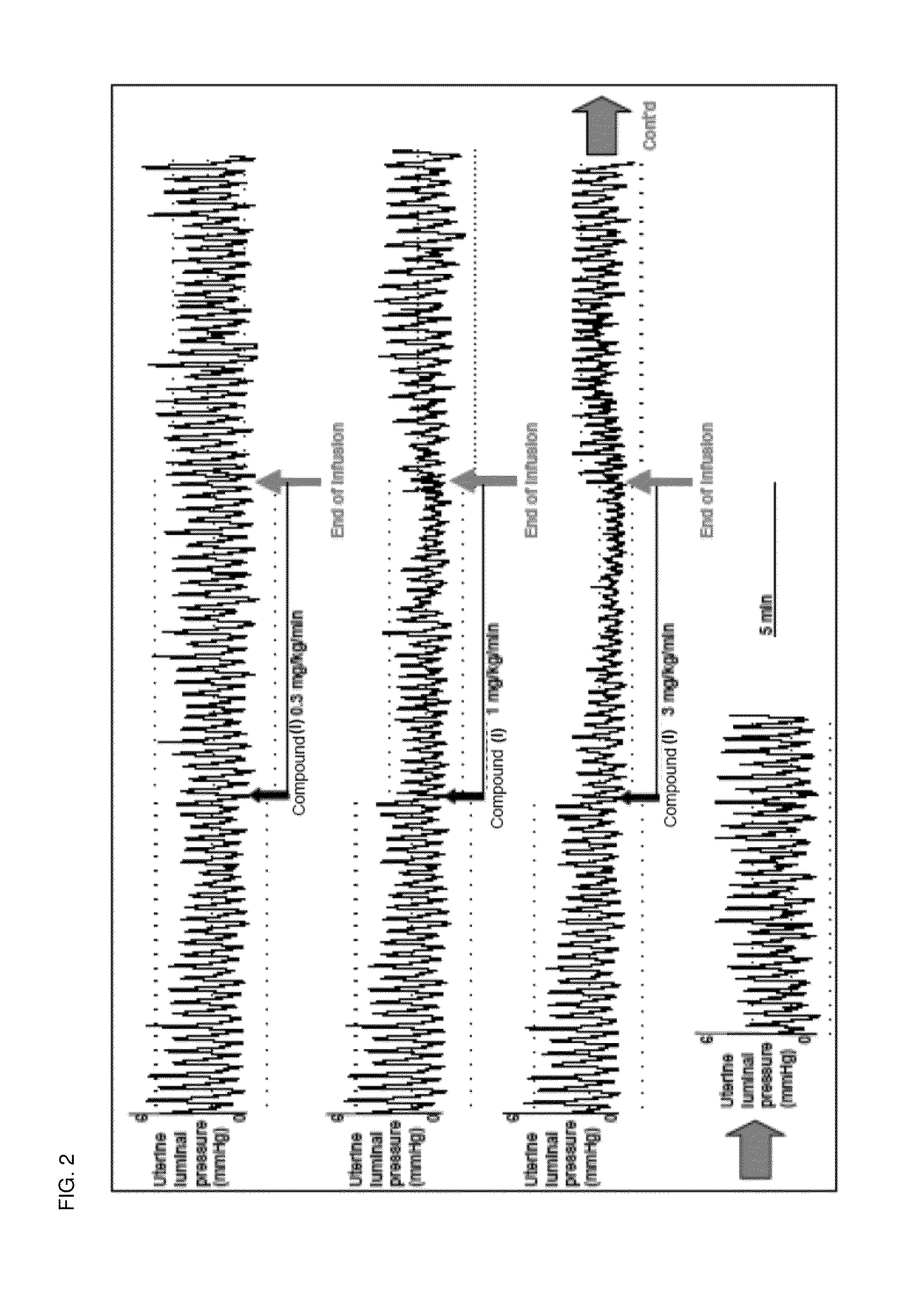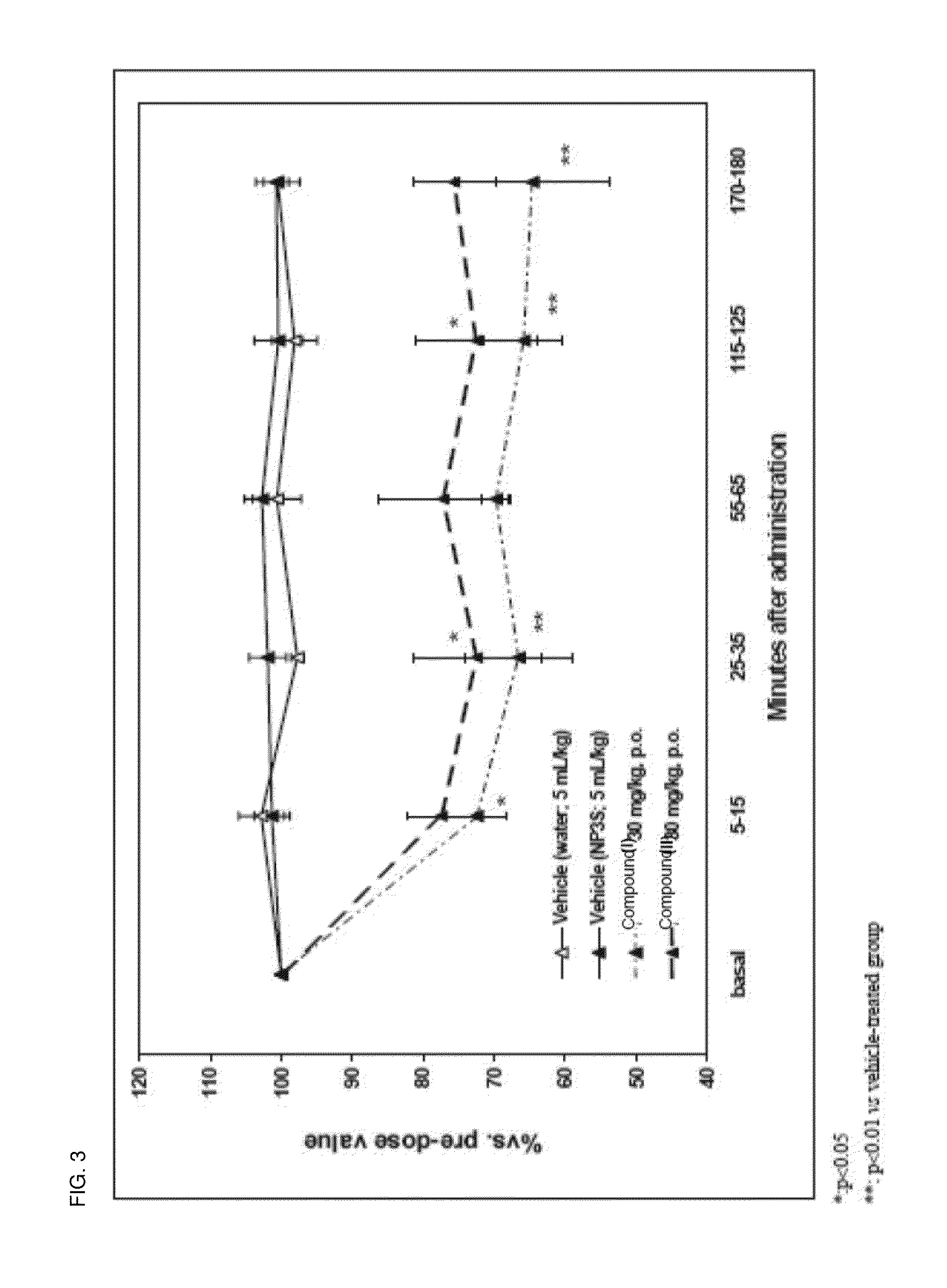Α-amino esters of hydroxypropylthiazolidine carboxamide derivative and salt form, crystal polymorph thereof
a technology of hydroxypropylthiazolidine and carboxamide, which is applied in the field of hydroxypropylthiazolidine carboxamide derivatives and salt forms, and crystal polymorphs thereof, can solve the problems of pre-term delivery being a prevalent cause of perinatal mortality in the developed world, and the actual cost of this care is even higher, and the actual cost of this care is over $5 billion per year
- Summary
- Abstract
- Description
- Claims
- Application Information
AI Technical Summary
Benefits of technology
Problems solved by technology
Method used
Image
Examples
example 1
Preparation of Compounds I and III
[0146]Compound I, and the chloride salt thereof (compound III), were prepared according to Scheme 1, shown below. This Example will describe each of the stages carried out to synthesize compound I, designated Stages 1-6.
[0147]
Stage 1: Preparation of 2-[1-(4-fluorophenyl)-3-hydroxypropylcarbamoyl]thiazolidine-3-carboxylic acid tert-butyl ester
[0148]
[0149]To a suitably sized flask (vessel A), 3-(butoxycarbonyl)-1,3-thiazolidine-(2S)-carboxylic acid (1 wt) was added, followed by tetrahydrofuran and the flask contents were subsequently cooled to −35° C. to about −45° C. N-methylmorpholine (1.18 vol) were then added to the flask while maintaining the temperature between −30° C. and −40° C. Isobutyl chloroformate (0.58 vol) were then added to the flask while maintaining the temperature between −30° C. and −40° C.
[0150]To a separate vessel (vessel B), (3S)-amino-3-(4-fluorophenyl)propan-1-ol (0.76 wt) and THF were added and the vessel was mixed thoroughly ...
example 2
Pharmacodynamic Properties of Compound I and Salts Thereof
Non-Clinical Pharmacology
[0170]Compound I and salts thereof are rapidly converted to compound II following gastrointestinal tract administration. Compound II is a competitive and reversible prostaglandin F2α receptor antagonist (human FP2α receptor Ki=6 nM) that is under development for the management of pre-term labor by inhibition of premature uterine contractions. Efficacy pharmacology (tocolytic effect) has been demonstrated in a model of spontaneous uterine activity in late-term pregnant rats.
[0171]The potency of inhibition of compound I and compound II on prostaglandin F2α receptor was assessed by analyzing the affinity of these compounds for recombinant FP receptor expressed in HEK293-EBNA cells. The results show high binding affinity of compound I and compound II to the human receptor (see Table 1).
[0172]Selectivity of compound II was tested against all eight prostaglandin receptor subtypes. Selec...
example 3
Crystal Screens of Compound I Salts
[0179]This example describes experiments conducted to generate and characterize crystalline salt forms of compound I.
Summary
[0180]The mesylate salt of compound I was determined to be amorphous by XRPD. Attempts to crystallize the material were not successful. The free base was synthesized from the mesylate salt and was used in the preparation of a variety of salts. A crystalline hydrosulfate salt was obtained directly from the salt synthesis. Three salts were crystallized using different solvent mixtures and crystallization techniques: hydrochloride, fumarate and dihydrophosphate. The hydrochloride salt appeared to exhibit low hygroscopicity, extended stability at elevated relative humidity (RH), and assumes a single crystal form when crystallized from a variety of distinct experimental conditions.
[0181]The crystalline HCl salt was obtained in two evaporation experiments and a slurry experiment. The same XRPD pattern was observed in each case. Base...
PUM
 Login to View More
Login to View More Abstract
Description
Claims
Application Information
 Login to View More
Login to View More - R&D
- Intellectual Property
- Life Sciences
- Materials
- Tech Scout
- Unparalleled Data Quality
- Higher Quality Content
- 60% Fewer Hallucinations
Browse by: Latest US Patents, China's latest patents, Technical Efficacy Thesaurus, Application Domain, Technology Topic, Popular Technical Reports.
© 2025 PatSnap. All rights reserved.Legal|Privacy policy|Modern Slavery Act Transparency Statement|Sitemap|About US| Contact US: help@patsnap.com



